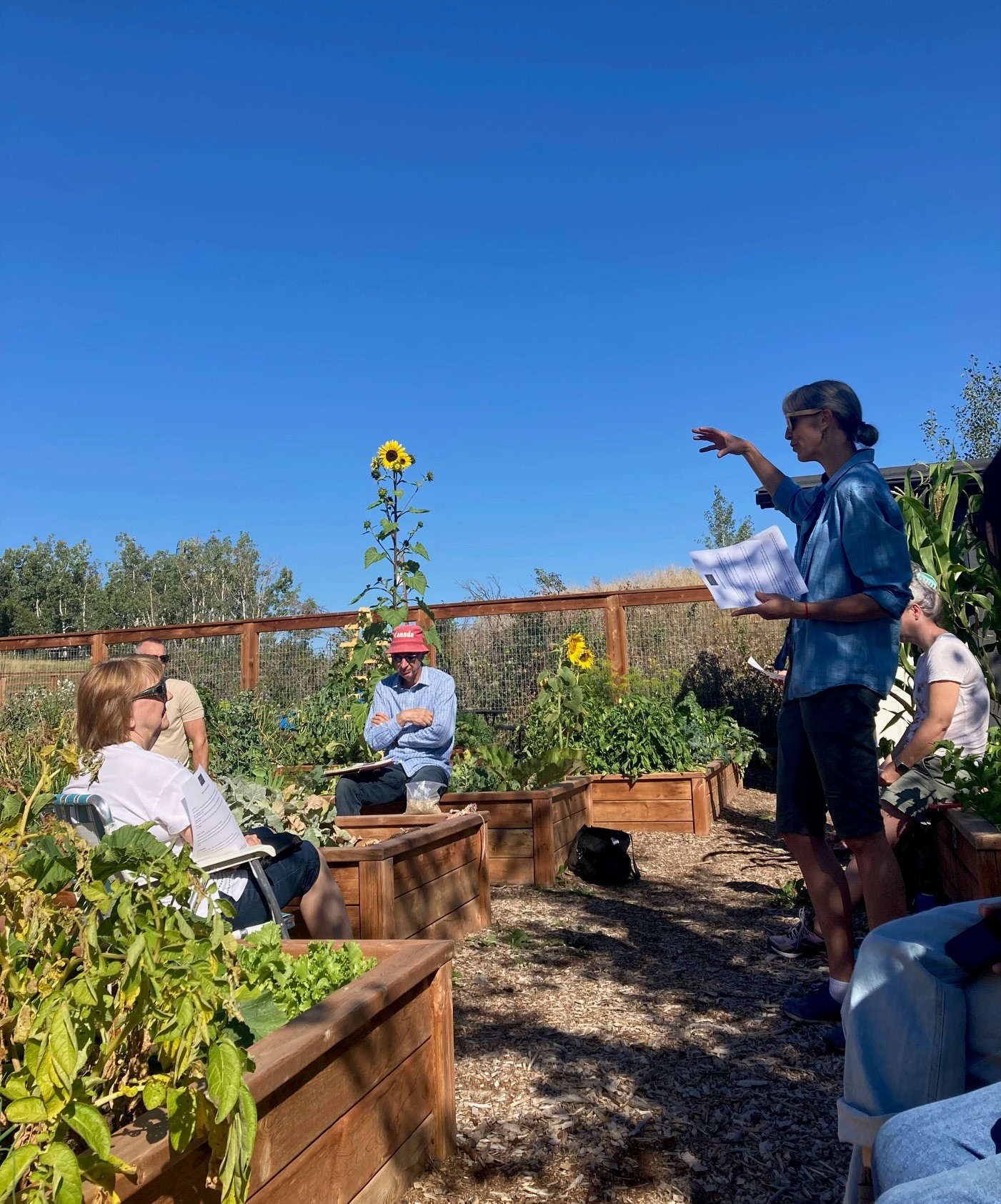by Simon Brame
On the morning of Saturday, September 7, we were again honoured to have Joanna Tschudy from the Calgary Horticultural Society give us another presentation. Joanna is the Community Development Coordinator for the CHS. Her talk was a Seed to Table community garden discussion and this time focussed on harvesting our summer crops and how to winterize our raised beds for the coming winter.
Two years ago, Joanna gave us an introduction into starting a community garden and how to set up a raised bed. Last year her talk was about bugs and weeds in the summer months. This year her presentation completed the annual cycle with information about the autumn harvesting of our vegetables and flowers prior to the pending frost.
The session started with the gardeners present giving an update on what worked well, or not so well, this year in their own raised bed. It is very interesting to see how the results vary from year to year and bed to bed. Water, rain, wind, temperature, bugs, weeds, seed germination, seed selection, soil nutrients, and fertilizer are just some of the many and complex variables that have an impact on our crops. It can be both frustrating and exciting to see the wide variety of results from within our small garden area.
Springbank Hill is also somewhat unique within the city as having a relatively high elevation (1,130 m or 3,710 ft) and being very exposed. So, our microclimate results in a slightly shorter growing season compared to most other areas in Calgary due to the cooler temperatures and more bracing wind. As if we needed any more challenges to being a gardener!
With the nights rapidly becoming cooler, the warm-season crops (tomatoes, peppers, squash) need to be picked when nighttime temperatures drop below about 5 degrees Celsius. Some vegetables continue to do well (root crops like potatoes, brassica like Brussell sprouts, and alliums like leeks and onions) as they will become sweeter with exposure to even a mild frost. Wildflowers can even thrive in the cooler autumn temperatures and often continue flowering until the first killer frost.
To extend the season it is possible to use covers (cloches, plastic, sheets) when the first frost is anticipated. These covers prevent the cold air from settling and can usually add a few more important days prior to harvesting.
Harvesting is the time when you realize that it is very easy to pick the crop, but much more time consuming to process (pickle, dehydrate, freeze, can, cool store). My preferred, and lazy, option is to let some of my beans and peas go to seed and let them dry out for winter soups and for next years seed planting.
Once the beds have been harvested it is a good idea to cover the exposed soil with a layer of mulch such as dried grass clippings, straw, cut up green leaves, or finely chopped wood chips. Mulch is important as it provides an insulation layer that protects the soil from our temperature and humidity winter extremes. Another option is to plant a cover crop, with Joanna suggesting that fall rye is one of the best alternatives. If planted no later than early September, this will germinate in the fall and help protect the exposed soil over the winter. In the spring, this early green growth can be gently turned over into the soil, prior to any new planting, as an excellent source of nitrogen and nutrients.
September is a good time to also be planting a winter crop (e.g. garlic, rhubarb, chives, asparagus, lettuce, spinach) which can survive the harsh winter and make a fast start early next year. Lettuce seeds sprinkled amongst your garlic makes a good companion planting.
The primary key to the success of our garden is ensuring that our soil quality remains at a high standard. Early next year the garden committee will be ordering a load of good compost that can be spread on our gardens prior to planting. We are also hoping to expand our garden by building new raised beds inside both the north and south fences. These will probably be used for an exciting new communal planting/picking area for plants like herbs, alliums, and fruit bushes.
Joanna Tschudy is to be congratulated in providing excellent information that has helped our community garden be successful. Her knowledge and enthusiasm rubbed off on all of us and provides inspiration for another exciting growing season next year.
Any gardening questions can be directed to [email protected].

Click here to the Springbank Hill Community News home page for the latest Springbank Hill community updates.











